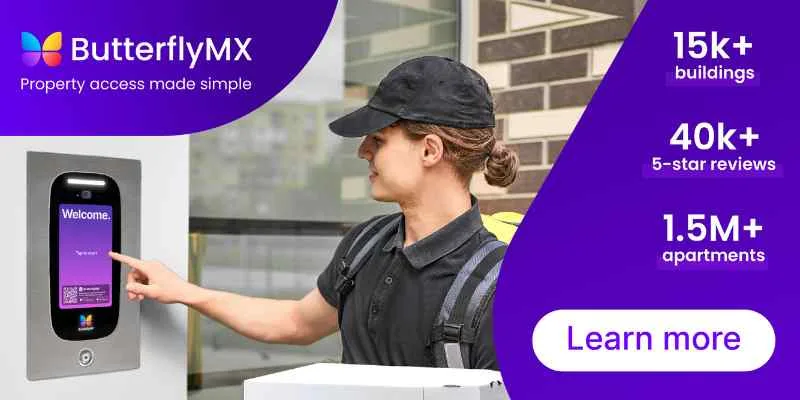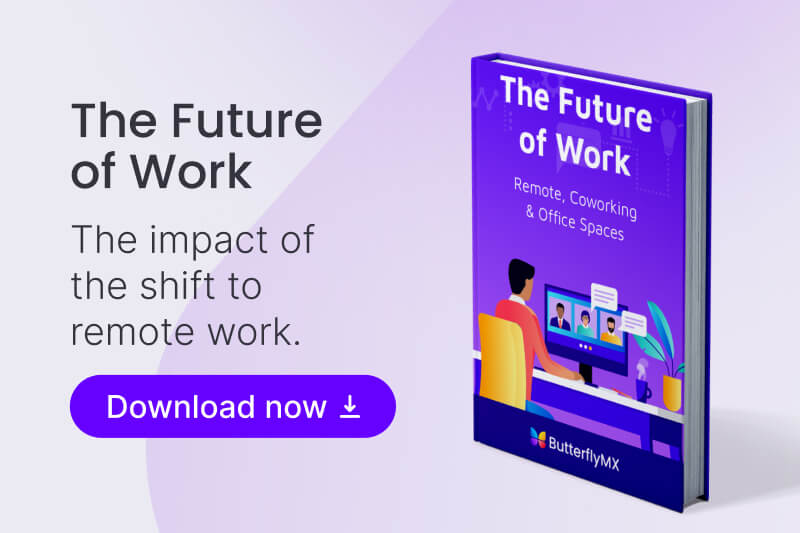Key takeaways
- The future of work space is one that embraces employees’ wants, fosters ideas, and empowers flexibility.
- The future workspace experience includes flexibility, decentralization, and hybrid work models.
- Four elements of future work space design include fluidity, accessibility, freedom, and technology

Whether you fall into the return-to-work camp or the remote-work-forever club, it’s clear that the future of work space is changing for good. As such, you’re likely trying to decide if it’s better to go with the flow and design a workspace that reflects the future.
But what does the future of workspace look like?
In this post, discover important projections about the future of office work spaces, what employees want, and the benefits of modernizing the way we work.
This post covers:
- What is the future of work space?
- What does the future work space experience look like?
- 4 elements of future work space design
What is the future of work space?
The future of work space is one that embraces employee wants, fosters ideas, and empowers flexibility.
Between return-to-office initiatives, quiet quitting, and commercial real estate debates, there’s a growing need to define the future of work and office spaces.
Yet, many unknowns surround the prospect of changes to a work routine that’s been maintained for decades. As such, it’s helpful to have a blueprint for what the future of the workspace could look like and how it can actually benefit employees and employers alike.
The future of workspaces can benefit everyone in the following ways:
New designs for efficiency
The old ways of commuting, sitting in a cubicle, and working in an office not designed for individual productivity are past. And if we want people to begin making their way back into the office, we have to recognize that things can’t stay the same forever and redesign the office workspace with those realizations in mind.e realizations in mind.
Designing the workplace for efficiency looks like:
- Rethinking the closed-off cubicles and opening up the floor plan to allow more flow.
- Installing more glass walls, lighting, and open spaces.
- Allowing for more ownership of an office space.
- Empowering employees to take charge of when they access office spaces and when they can leave.
Meeting employee desires
When it comes to creating the future workspace that everyone wants, it’s a good idea to start by listening to the employees. Moreover, making sure that the workplace contains elements that make it worth the return will help them feel better about giving up a fully remote position.
Employees want:
- Less commute time per week.
- More time to spend with their families or pursuing non-work related activities.
- Less micromanagement of their everyday tasks.
- More trust in their time-management skills from upper management.
- Office spaces that don’t make them feel depressed.
- Core office hours instead of spending all day in the office.
- The ability to come and go.
Increasing community
In this digital age, people feel less connected to those they work and live with. However, the answer isn’t just to get them into the office — employees will find a way to remain disconnected if they don’t find a reason to commit to mental energy in their workplace.
In fact, 40% of employees feel they don’t belong in their workplace. This sense of not belonging leads to less commitment and a reduced sense of accomplishment. Some talking heads blame many factors for the fall in workplace engagement, but a much larger issue is at play—a lack of community.
Some ways to foster community in the workplace include:
- Helping employees feel more like a team instead of just numbers by investing in their well-being.
- Recognizing hard work with rewards that make employees feel supported.
- Encouraging open communication between employees, teams, and management. Moreover, allowing uncensored discourse makes employees feel heard.
- Implement wellness programs that foster mental, emotional, and physical well-being for all.
Discover office automation technology:
What does the future work space experience look like?
The workplace experience of the future includes:
Flexibility
Flexibility in the workplace receives a resounding “yes” in all corners of the globe, but it’s also met with a lot of hesitance. How do you know if your employees are doing their work? What will happen to the physical work locations?
The truth is that employees are as diverse as their circumstances. In other words, some employees will always want to return to the office, and some will not, which creates a perfect balance.
In the long term, embracing flexibility in your workspace will allow employees to find what works for them — ultimately allowing each one to shine and meet company goals in a way that works best for them.
Decentralization
Workspace decentralization means that not all employees live and work in the same location. In fact, many facets of an organization’s operations are spread out and handled by different teams – some of whom are all over the world.
Decentralization means there may be one central location — such as the headquarters — from which all directives come. Using office automation software such as cloud computing and online dashboards, companies can still operate as one without having to keep all employees in one place.
Decentralization in the workplace is the future and has been the trajectory for much longer than most people are aware of.
Hybrid work models
Hybrid work models involve employees working from home for a certain number of days a week and in the office for the rest. You’ve likely heard about the prevalence of hybrid work models, as they are one of the most common models shaping the face of future work spaces.
Hybrid work models are one of the best compromises for employees who love their flexibility. What’s more, hybrid work is easy when office design planning accounts for the needs of hybrid workers. For example, an access control system can help define who and when employees can enter the office.
4 elements of future workspace design
Four elements of a future work space design include:
- Fluidity. With the above experiences in mind, designing your workspace for fluidity is paramount. This includes making it easier for people to come and go as they please, moving around the office with ease, and making sure people aren’t isolated.
- Accessibility. Accessibility is important for future work spaces because of the diverse working population. You have to consider each employee’s varying abilities, perspectives, and needs.
- Freedom. Freedom to learn, discover, and create is important when it comes to engagement from employees. Workspaces and cultures that let people move around and work without restrictions see the biggest amount of new ideas from their employees.
- Technology. The future of workspaces is dependent on technology-driven environments. For instance, touchless office technology is making it easier for hybrid work employees to move about their buildings safely and conveniently.







